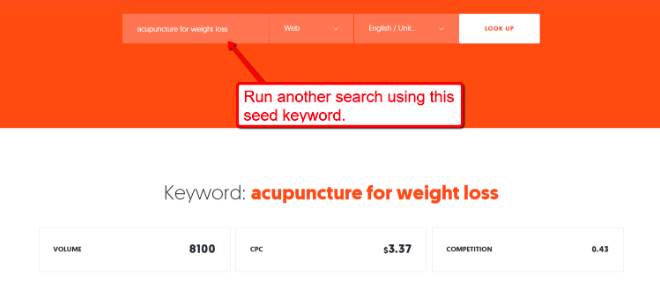
You can’t afford to cut corners as a digital marketer.
If you need to develop content, then you need to make it as brilliant as possible. If you want to create a landing page, then you need to make ‘em as optimized as possible for conversion.
In short, you need to be excellent at what you do.
Such is especially the case when it comes to keyword research.
Remember, the keywords you target can single handedly decide the outcome of any of your marketing strategies.
Whether you’re trying to promote a blog post or launch a new ad campaign, targeting the right keywords ensure that your message reaches the right people. That is, assuming you don’t commit any of the keyword research mistakes outlined below:
1. Going for the Most Popular Keywords
When it comes to marketing, targeting keywords searched by thousands of users might sound appealing at first glance. After all, wouldn’t you want to reach as many people as possible?
Unfortunately, popular keywords are usually not feasible for smaller brands, let alone profitable.
To put things in perspective, let’s use a keyword research tool like Ubersuggest and inspect the keyword: “weight loss.”
In Ubersuggest, all you need to do is enter a seed keyword to initiate your research. There’s no need to create an account or surrender your email address.


Looking at the search volume, it’s clear that the keyword “weight loss” is immensely popular. Unfortunately, the “Competition” metric shows that it’s highly competitive.
Remember, Ubersuggest keyword competitiveness from 0.0 to 1.0.
Unless you’re a big enterprise with a deep marketing budget, you should go for the 0.4 range, which encompasses all low-medium competition keywords.
2. Targeting Just One Keyword
If you should avoid targeting the most popular keywords, how is your brand supposed to attain significant growth?
The answer is simple: you need to target multiple keywords that are relevant to your brand.
Fortunately, Ubersuggest already did the work of expanding your seed keyword into hundreds of long-tail keyword variations.
In relation to the previous example, here are some of the keyword suggestions you’ll get:

At first look, you’ll notice that a lot of these keywords look promising individually. However, you need to look for multiple keywords that can be woven together in cohesive pieces of content — not just stuff all of them in without contextual relevance.
Sure, you can contort the topic to squeeze in loosely-related keywords, such as “belly fat diet,” “best diet plan,” and “all natural weight loss.” A better strategy, however, is to run another keyword search using one keyword that catches your attention.
For example, you can use “acupuncture for weight loss” as your seed keyword to unearth even more long-tail keyword variations:

Here are some of the keyword suggestions worth considering:

You can also use look for keyword ideas in the social media space and how the keywords are performing.
If you’ll run the keyword “acupuncture” through Keyhole.co, you’ll have access to more related keywords.

If you still aren’t satisfied with your lineup of long-tail keywords, just repeat the same steps using different seed keywords each time. Do it all again for new content ideas that you want to use for your blog.
3. Ignoring Customer Intent
Apart from the metrics shown on Ubersuggest, there’s one more factor you need to take into account in your keyword research: user intent.
Remember, there are three possible reasons why someone would search using a specific keyword:
- Navigational Search
In a navigational search query, a user types in the name of a product, brand, website, or person. - Informational Search
An informational search occurs when the user is looking for information, but aren’t necessarily thinking about taking action. - Transactional Search
Lastly, transactional search queries cater to users who are ready to convert into paying customers. These are the kind of users you want to target in your keyword research.
Of course, user intent isn’t always significant in certain niches.
For example, if you run a blog that offers personal development advice, you normally position your content for informational search queries. Unless, of course, if you sell infomercial products such as eBooks or online courses.
Nevertheless, you need to learn how to look specifically for keywords that have commercial intent. Keep in mind that in online marketing, traffic is meaningless if you don’t optimize for conversions.
The good news is, you can use Ubersuggest to pluck out transactional keywords from your keyword suggestions pool. Simply enter commercial-based terms like “buy,” “order,” “price,” or “services” into the “Filter Results” panel to the left of the keyword suggestions.
For example, after expanding the seed keyword “web designer,” you can enter terms like “price” and “hire” to locate transactional keywords:

In terms of search volume, you’ll find that some keywords with commercial intent don’t exactly stand out. However, targeting them in your marketing strategy is a great way to pull in qualified leads into your campaigns.
4. Chasing After Trends
Finally, you should know that some keywords tend to fluctuate in terms of demand over the months.
Imagine spending thousands of dollars and countless hours optimizing for a trendy keyword — only to find out it has gone out of style before you break even.
A seasonal keyword, for example, gets a huge spike in search volume during specific months, and then tanks for the rest of the year. Just take a look at the search volume performance of “inflatable pool” and notice how the average search volume spikes around the month of June:

Other than keyword seasonality, there are other reasons why keywords may have changing search volumes. What you need to watch out for are fads that will eventually run out of demand, like “fidget spinners” that once took social media by storm:

On the flip side, it’s entirely possible for a keyword to have an upward trend in terms of keyword demand. This is especially common in emerging technologies or sub-niches — providing marketers with a chance to boost their authorities as information providers.
Conclusion
As a marketer, it’s your job to unearth the most profitable (and feasible) keyword opportunities before you execute any of your marketing campaigns.
Unfortunately, keyword research isn’t as easy as it sounds. However, as long as you keep a sharp eye out for the mistakes we’ve listed, you should be able to consistently scrape profitable keyword ideas — regardless of your niche.
If you think we missed an important mistake that marketers should watch out for, be sure to let us know!


